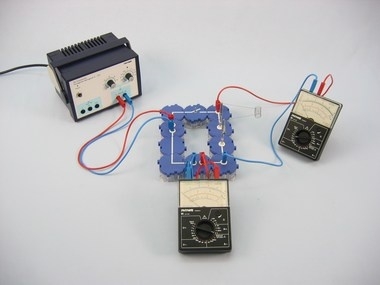
Technical data Conversion of electrical energy into thermal energyArticle no: P1374700  Principle The heating and lighting effects of electric current are well known to the students from everyday life, and they have already experimented with filament lamps and utilised their illuminating, or lighting, effect as a measure of the strength of electric current. In this experiment, it is important that they realise that in all these processes, electrical energy is converted into thermal energy in the form of heat. In the evaluation, one of the following themes can be handled according to the state of knowledge of the students: in the simplest case, the phenomenon and for a higher theoretical demand, the energy ballance. Eel = Q with Eel = U × I × t. The heat capacity of the glass vessel must be taken into consideration in the evaluation. Q = [(cGlass + cWater) × mWater] × Δ T. Benefits
Tasks How does an immersion heater work? Set up a circuit with a model of an immersion heater and use it to convert electrical energy into thermal energy.
Scope of delivery
| |||||||||||||||||||||||||||||||||||||||||||||||||||
Robert-Bosch-Breite 10 – 37079 Göttingen – Germany
www.phywe.com

